Merle Dogs: What Are They and Which Breeds Have the Mutation?

Over the years, humans have mixed different canine genotypes in search of animals with special characteristics. Size, anatomical conformation, coat coloration, and even personality, crossbreeding has resulted in the variety of dogs we know today. This is the case with merle dogs, who have a genetic mutation that gives particular shades to their coat.
However, even though it’s a very desirable trait among breeders and owners, in some cases it has been linked to eye and hearing problems. Discover all the aspects related to this genotypic and phenotypic variant in dogs. Get ready to find out about merle dogs.
What is the merle coloration pattern?
The merle coloration pattern is the result of a mutation of the PMEL gene, located in a region of chromosome CFA10. This phenomenon was identified in 2006, through molecular characterization methods in the genome of Shetland sheepdogs.
According to research published in the journal PLOS ONE, this gene dilutes the pigment eumelanin, which is responsible for giving dark coloration to certain areas such as the coat, iris, or skin. For this reason, merle dogs have a non-uniform lightening of the basic colors of their body, which gives rise to their characteristic pattern of shades.
Currently, two variations of merle dogs are recognized:
- Blue merle: This is the most common, and occurs in dogs that have a black base color that’s diluted into randomly distributed gray patches.
- Red merle: This occurs in dogs with white and brown base colors, which are diluted into reddish shades.
On the other hand, there’s another type known as cryptic or ghost merle, according to a study published in the journal Genes. In this case, dogs have the PMEL gene mutation in their DNA, but don’t exhibit it phenotypically. That is, they show little or no dilute coloration patterns in their coat.
Gene heritability and double merles
According to the principles of heritability, genes are transmitted in pairs, one part from the male and one part from the female. For example, if two dogs with a solid coat color, i.e. without dilute patterns, mate, then their puppies will be born with a solid color coat.
On the other hand, if one dog has solid color genes and the other has the PMEL gene mutation, the offspring will have a 50% chance of having merle coloration.
Now, according to the research already reviewed in the magazine Genes, if two merle dogs are crossed, the dilution of the color will be such that the litter will have a white coat. Likewise, dogs with the double merle condition are born with certain ocular and hearing difficulties.
Diseases of merle and double merle dogs
As mentioned above, the PMEL gene mutation may be accompanied by visual or ocular problems. For example, according to an article in the journal BMC Veterinary Research, merle dogs are more likely to be born with microphthalmia (small eyeballs), iris abnormalities, or even blindness.
In addition, according to a study published in the Journal of Veterinary Internal Medicine, dogs with this trait may have limited hearing, and even complete deafness. This is because the cells of the inner ear need pigment to function well, a condition that is lost in merle dogs.
Other pathologies that can develop include lethargy, short life expectancy, bone structure abnormalities and skin diseases. While most of these disorders are more common in double merles, there is a small chance that single merles will produce them.
Merle dog breeds
Merle coloration is present in a wide variety of dog breeds. It should be noted that not all dogs possess the mutation in the PMEL gene, so only a few individuals may manifest these patterns in their coat regardless of breed.
Border collie
This breed, developed in the United Kingdom for herding work, is considered one of the most intelligent breeds. It has great agility, speed, cunning, and learning ability.
Its coat is abundant, and can be found in variations of red and blue merle. In addition, its eyes can be blue or have heterochromia, i.e. one blue and the other brown.
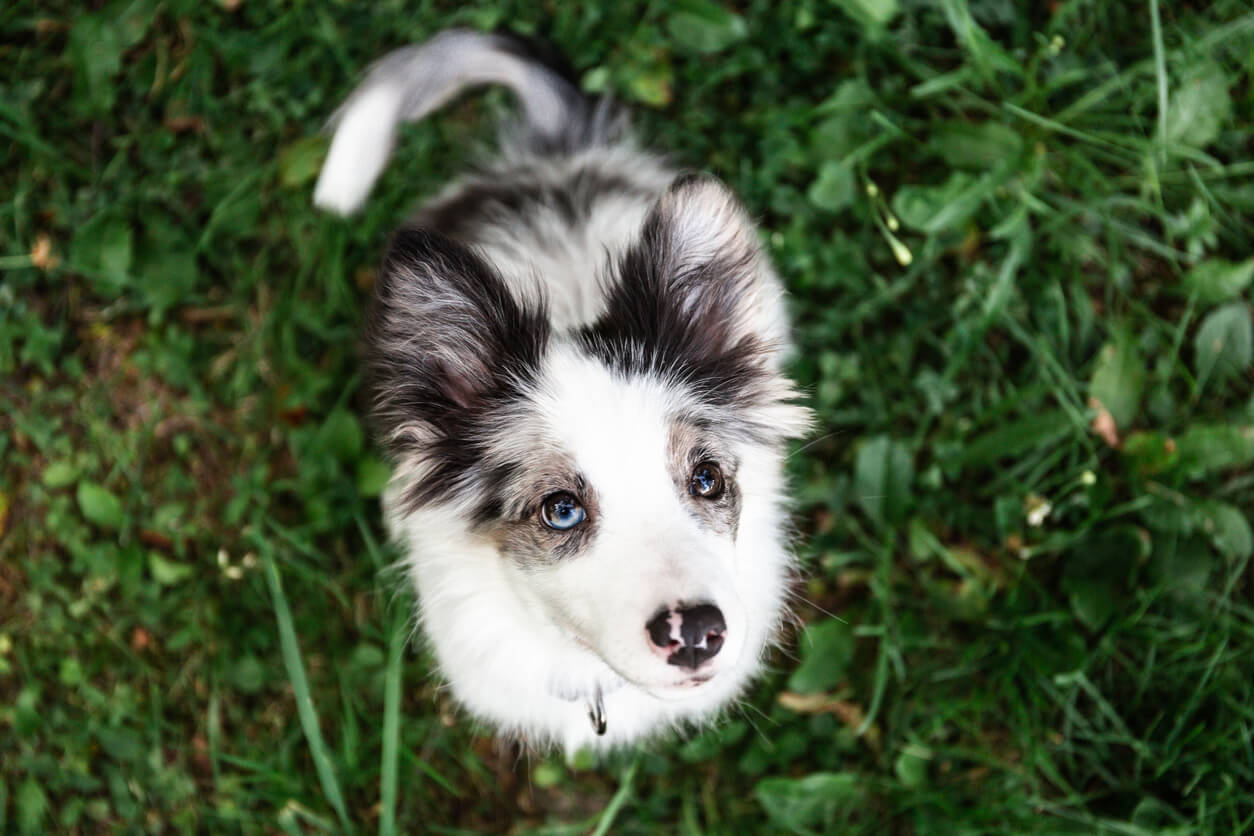
Australian Shepherd Dog
Originally from the United States, this breed was created for the management and care of flocks of sheep. They have a calm, balanced, and obedient character. Likewise, it stands out for its great intelligence and learning ability.
Like the Border Collie, it can have both blue and red merle. A particularity is that the blue merle dogs have a black tone on the nose, the edge of the eyelids and the corner of the lips. Red merle dogs have a brown tone in these areas. Similarly, the eyes can be of the same brown or blue color, or have heterochromia.
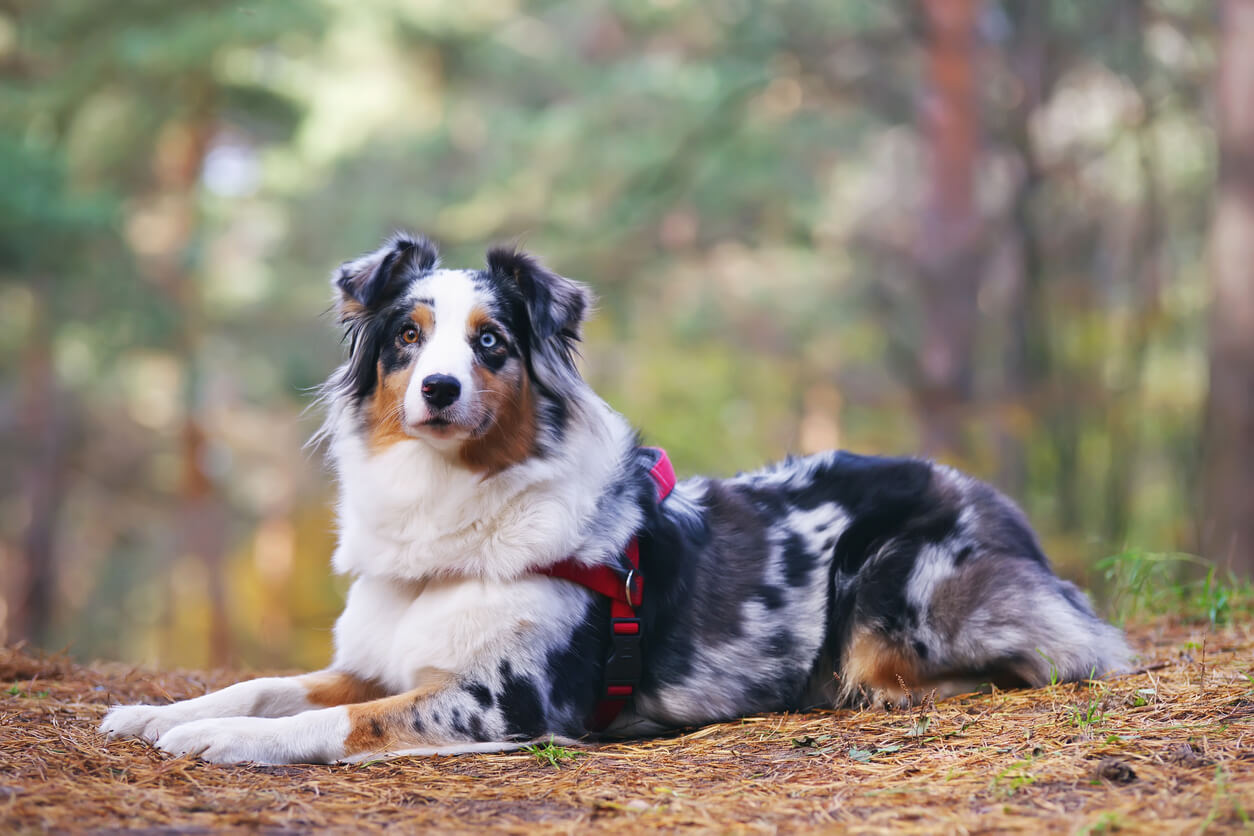
Mudi
The Mudi is a shepherd dog native to Hungary. Although not very well known, many studies that have analyzed the PMEL gene mutation in dogs have been conducted on this breed. It can appear in both blue and red merle.
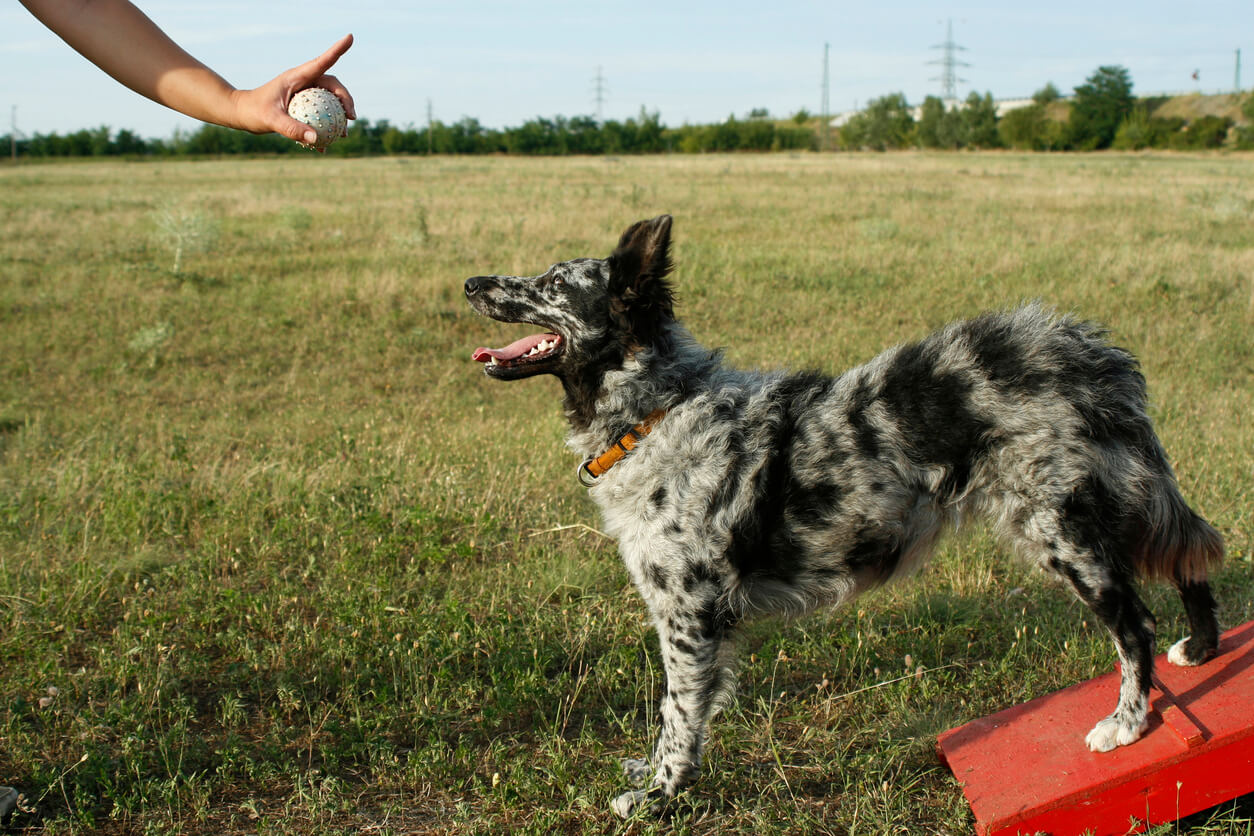
The Shetland Sheep Dog
This is the breed in which the PMEL gene that produces the merle coloration was identified. As its name indicates, it originates from the Shetland Islands in Scotland. It’s a sheepdog with great physical and mental capabilities. In addition, due to its small size, it’s highly valued as a companion animal in different parts of the world.
In this breed, the blue merle is present, with a high probability that, if it has this variant, its eyes will be blue.
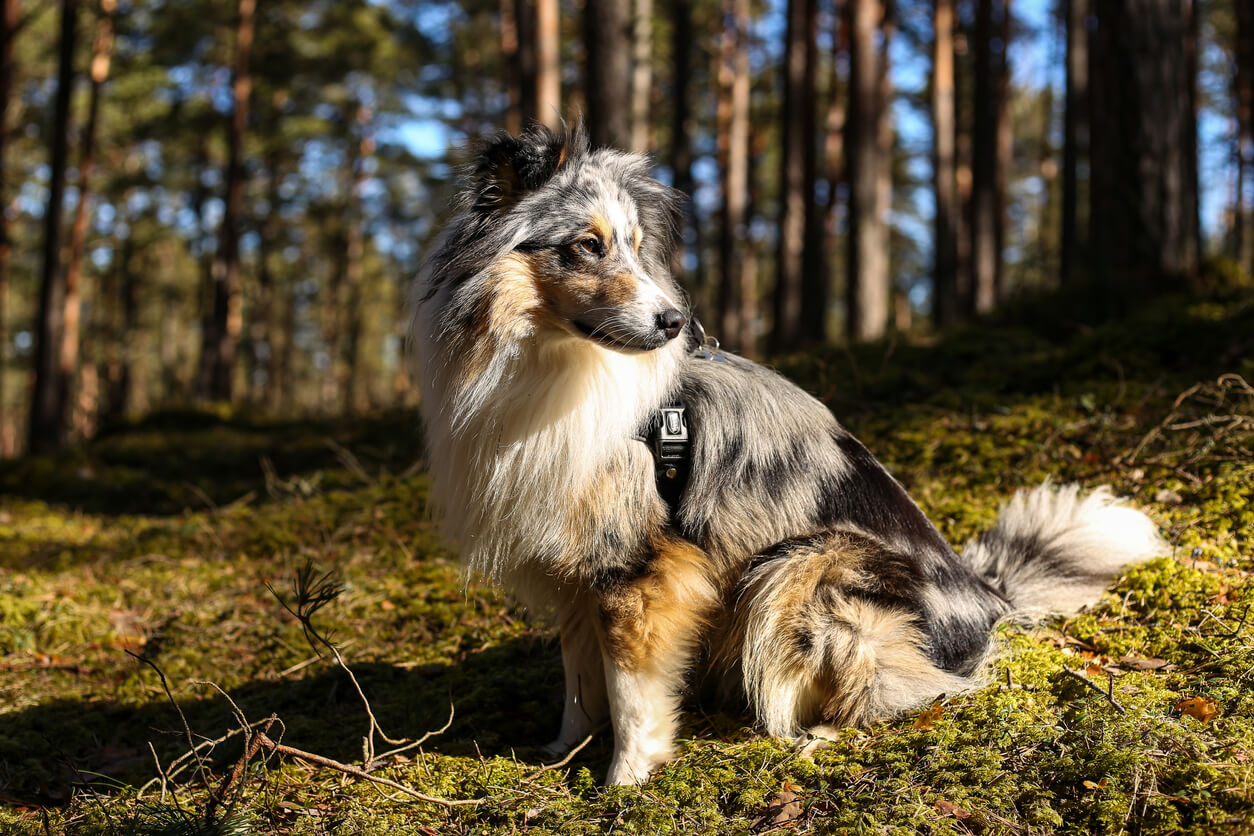
Catahoula
Known as the leopard dog, it’s a breed that originates from the United States. It was developed as a multipurpose canine; that is, to be both a hound and a herder.
Generally, all individuals born under this genetic lineage have blue or red merle coloration. This is why it’s known as the leopard dog, due to the mottled pattern of its coat. The eyes may be blue or show heterochromia.
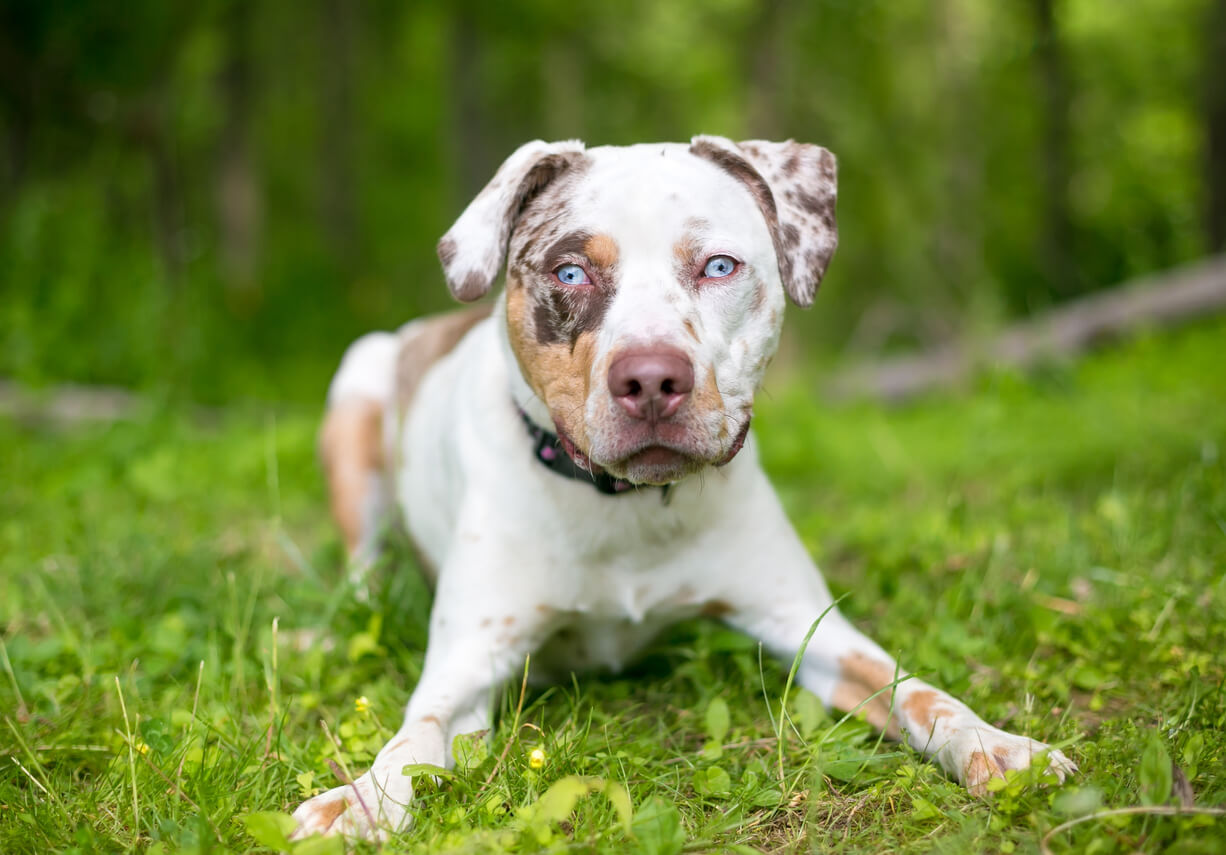
Dachshunds
This is a breed originating in Germany, bred to hunt small animals such as rabbits and mice. It can have both blue and red merle coloration. This variation is very popular in this type of dog. Check out this article to find out more.
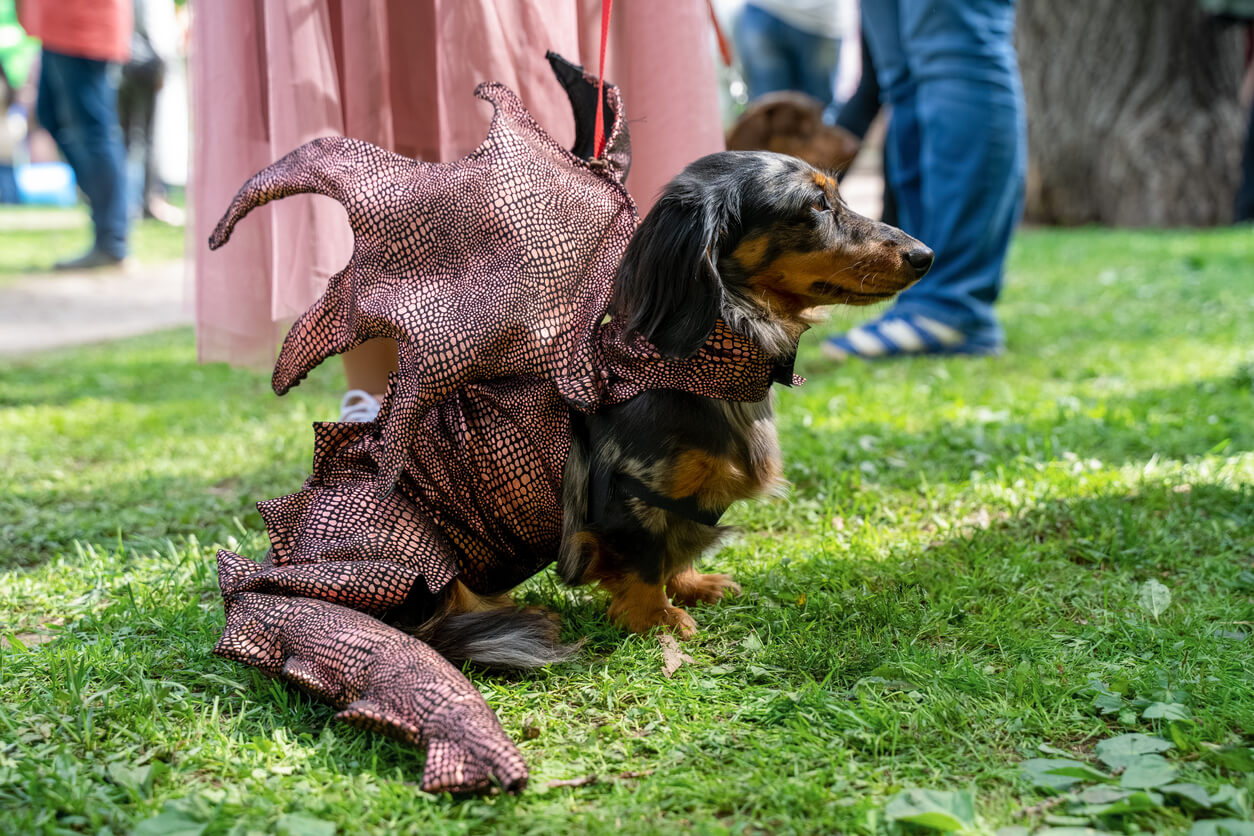
Merle dogs, health above all
No dog lover could deny the beauty that this condition brings to the animals that have it. However, in some circumstances, animal welfare must take precedence over the physical characteristics they may have.
Although most dogs with this mutation aren’t born with diseases, there’s still a small probability that they will be. In fact, there are institutions such as the Kennel Club that prohibit the crossing of two merle dogs, as the risk is higher in the double merle.
So, before acquiring a dog with these characteristics, we must prepare ourselves for the responsibility that this entails. In addition, consult a veterinarian about the special conditions that it may require before acquiring one.
All cited sources were thoroughly reviewed by our team to ensure their quality, reliability, currency, and validity. The bibliography of this article was considered reliable and of academic or scientific accuracy.
- Varga, L., Lénárt, X., Zenke, P., Orbán, L., Hudák, P., Ninausz, N., Pelles, Z., & Szőke, A. (2020). Being Merle: The Molecular Genetic Background of the Canine Merle Mutation. Genes, 11(6), 660. https://www.ncbi.nlm.nih.gov/pmc/articles/PMC7349775/#B9-genes-11-00660
- Hédan, B., Corre, S., Hitte, C., Dréano, S., Vilboux, T., Derrien, T., Denis, B., Galibert, F., Galibert, M. D., & André, C. (2006). Coat colour in dogs: identification of the merle locus in the Australian shepherd breed. BMC veterinary research, 2, 9. https://www.ncbi.nlm.nih.gov/pmc/articles/PMC1431520/
- Clark, L. A., Wahl, J. M., Rees, C. A., & Murphy, K. E. (2006). Retrotransposon insertion in SILV is responsible for merle patterning of the domestic dog. Proceedings of the National Academy of Sciences of the United States of America, 103(5), 1376–1381. https://www.ncbi.nlm.nih.gov/pmc/articles/PMC1360527/
- Strain G. M. (2012). Canine deafness. The Veterinary clinics of North America. Small animal practice, 42(6), 1209–1224. https://www.sciencedirect.com/science/article/abs/pii/S0195561612001258?via%3Dihub
- Strain, G. M., Clark, L. A., Wahl, J. M., Turner, A. E., & Murphy, K. E. (2009). Prevalence of deafness in dogs heterozygous or homozygous for the merle allele. Journal of veterinary internal medicine, 23(2), 282–286. https://onlinelibrary.wiley.com/doi/10.1111/j.1939-1676.2008.0257.x
- Langevin, M., Synkova, H., Jancuskova, T., & Pekova, S. (2018). Merle phenotypes in dogs – SILV SINE insertions from Mc to Mh. PLOS ONE, 13(9), e0198536. https://www.ncbi.nlm.nih.gov/pmc/articles/PMC6147463/
- Ballif, B. C., Emerson, L. J., Ramirez, C. J., Carl, C. R., Sundin, K., Flores-Smith, H., & Shaffer, L. G. (2021). The PMEL gene and merle (dapple) in the dachshund: cryptic, hidden, and mosaic variants demonstrate the need for genetic testing prior to breeding. Human genetics, 140(11), 1581–1591. https://link.springer.com/article/10.1007/s00439-021-02330-y
- Pelles, Z., Gáspárdy, A., Zöldág, L., Lénárt, X., Ninausz, N., Varga, L., & Zenke, P. (2019). Merle allele variations in the Mudi dog breed and their effects on phenotypes. Acta veterinaria Hungarica, 67(2), 159–173. https://akjournals.com/view/journals/004/67/2/article-p159.xml
- Saganuwan S. A. (2021). Modified formulas for calculation of encephalization: quotient in dogs. BMC research notes, 14(1), 223. https://doi.org/10.1186/s13104-021-05638-0
This text is provided for informational purposes only and does not replace consultation with a professional. If in doubt, consult your specialist.